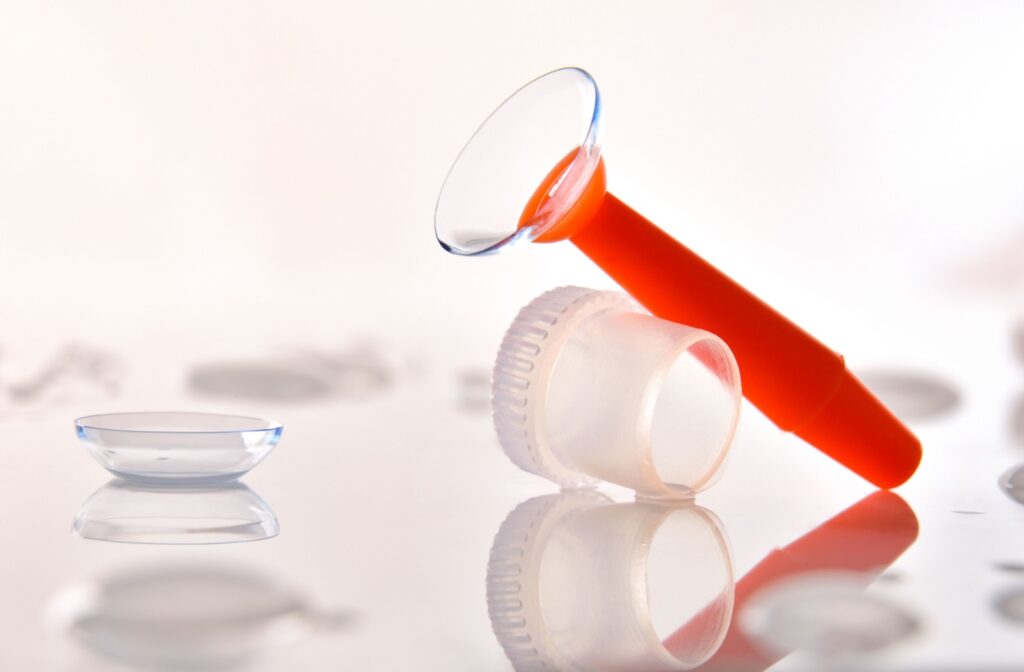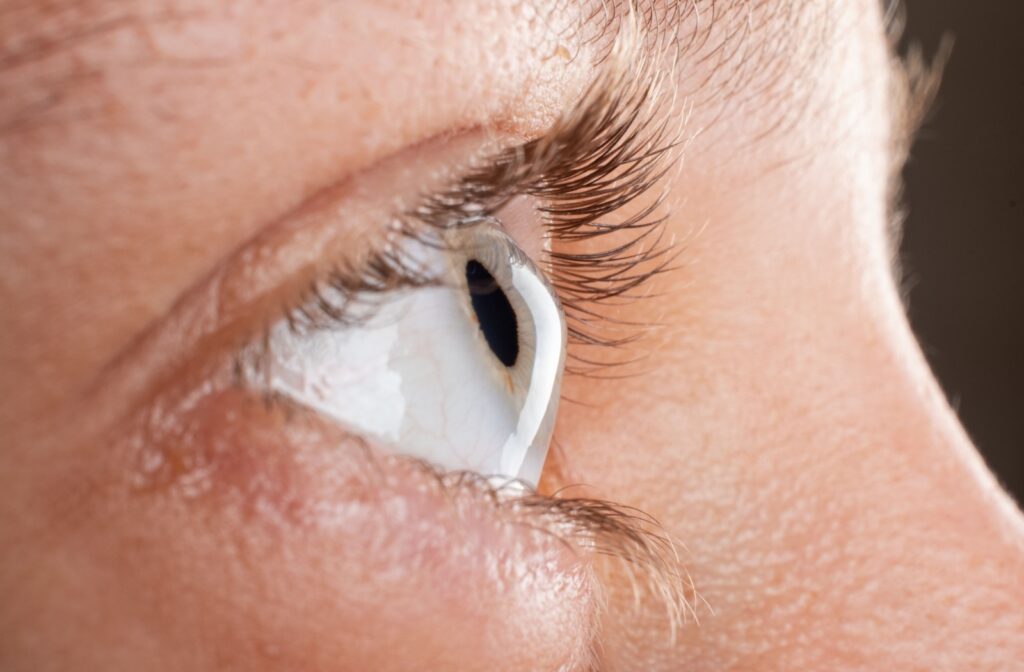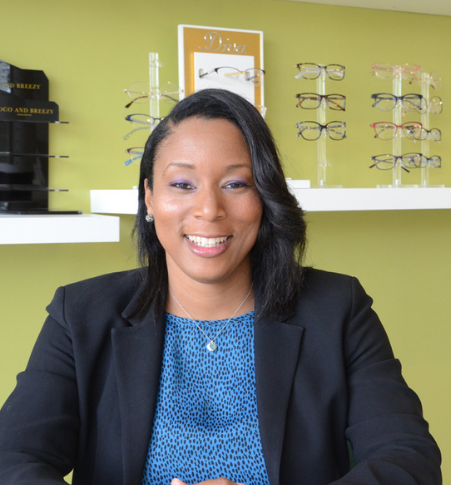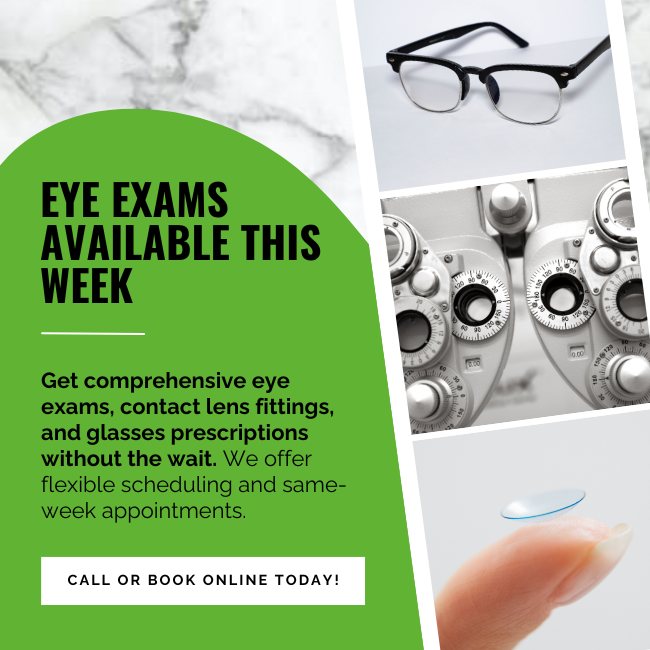Contact lenses have come a long way since their inception. They aren’t just tools for vision correction but also tailored solutions for complex eye conditions. Scleral lenses are a type of specialty lens designed to vault over the top of the cornea, where a traditional lens normally sits, and rest on the white part of your eye called the sclera.
This unique design makes them an excellent choice for people with eye conditions like dry eye or keratoconus. Because of their unique design, scleral lenses require a comprehensive fitting procedure. So, if you’re interested in learning whether scleral lenses are right for you, the first step is booking an appointment with your eye doctor to discuss your options.
What Are Scleral Contact Lenses?
At first glance, scleral contact lenses might look like your standard contact lenses, but they are far more specialized. Unlike traditional lenses that rest directly on the cornea, scleral lenses are larger and rest on the sclera, the white part of the eye.
This unique design creates a “vault” over the cornea, with a reservoir of hydrating fluid trapped underneath the lens. This design allows for better comfort and vision correction and caters to people with specific eye conditions.
Scleral lenses range in size but are significantly larger than the average soft lenses. This size ensures that the lens doesn’t contact the sensitive corneal tissue directly, making it an excellent solution for people with irregularly shaped corneas or ocular surface diseases.
How Is a Scleral Lens Different from a Regular Lens?
Understanding the differences between scleral and traditional contact lenses is essential to appreciating their innovative design. Here’s how scleral lenses stand apart.
Size
Scleral lenses are larger than soft contact lenses and rigid gas-permeable (RGP) lenses. While traditional contact lenses measure about 9-10 mm in diameter, scleral lenses start at 14 mm and can be as large as 24 mm. Their increased size ensures they cover a larger portion of the eye.
Fit
Unlike regular contacts that rest on the cornea, scleral lenses sit on the sclera. This provides more stability and avoids contact with the sensitive corneal tissues, making them ideal for patients with corneal irregularities.
Hydration
Scleral lenses trap a layer of fluid between the lens and the cornea. This constant hydration can relieve people with severe dry eye syndrome, as it is a barrier against dryness and irritation.
Vision Correction
While traditional lenses are effective for common refractive errors like myopia or hyperopia, scleral lenses are designed to correct severe refractive errors and irregular corneas that regular lenses cannot adequately address.

Benefits of Scleral Lenses
Scleral lenses aren’t just different in design. They also provide unique benefits that make them indispensable for addressing certain eye conditions. Here are the primary reasons why someone might choose scleral lenses.
Keratoconus
Keratoconus is a progressive eye disease in which the cornea thins and develops a cone-like shape, which can significantly distort vision. Traditional contact lenses often fail to provide adequate correction for people with keratoconus, as they cannot conform to the cornea’s irregular shape.
But scleral lenses vault over the irregular cornea and provide a smooth surface for refracting light. This design helps eliminate visual distortions and enhances clarity. The stable fit also provides comfort, even for people with advanced keratoconus.
Dry Eye Syndrome
Dry eye syndrome occurs when the eyes cannot produce enough tears or maintain adequate moisture due to medical conditions, environmental factors, or aging. Even basic activities like reading or using a computer can be uncomfortable for people with severe dry eye.
The fluid-filled reservoir beneath scleral lenses is a continuous hydration source, providing lasting relief from dryness and irritation. This extra hydration makes them a go-to solution for patients with chronic dry eye syndrome.
Severe Refractive Errors
Scleral lenses can also benefit individuals with severe refractive errors, such as high myopia (nearsightedness), hyperopia (farsightedness), or astigmatism. Their superior optical design corrects vision more effectively than soft lenses or glasses and provides sharper and clearer vision.
Post-Surgical or Injured Eyes
Traditional lenses may be uncomfortable or unsuitable for patients recovering from corneal surgeries or injuries. Scleral lenses, on the other hand, can promote healing while providing clear vision. They protect the cornea and maintain hydration.
Discuss Your Contact Lens Options with Us Today
Scleral lenses represent a significant advancement in the world of vision correction. Their unique design and tailored approach allow them to address complex eye conditions that traditional lenses cannot. Whether you’re living with keratoconus, struggling with severe dry eye, or dealing with advanced refractive errors, scleral lenses might be the solution you’ve been looking for. If you’re considering scleral lenses, contact our team at River City Vision Center today and book an appointment. One of our experienced eye doctors can examine your eyes, discuss your vision needs, and offer tailored advice on whether they fit your needs.





